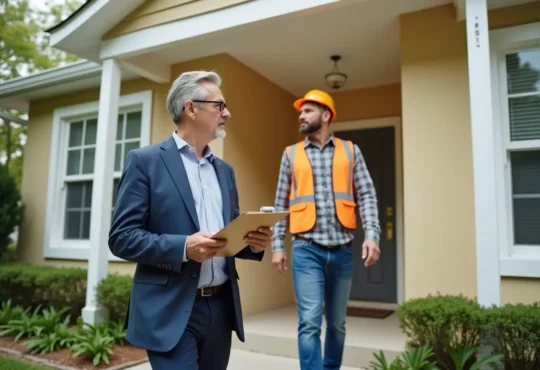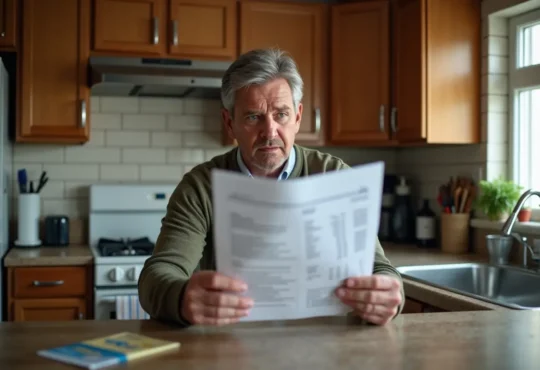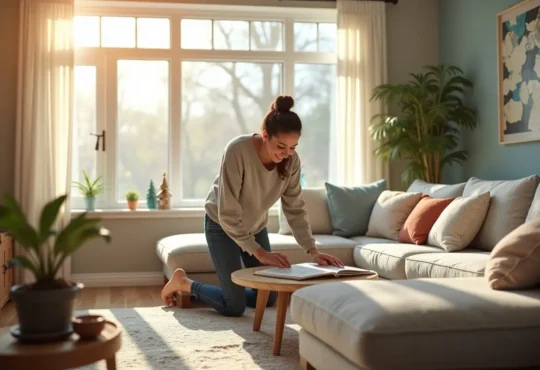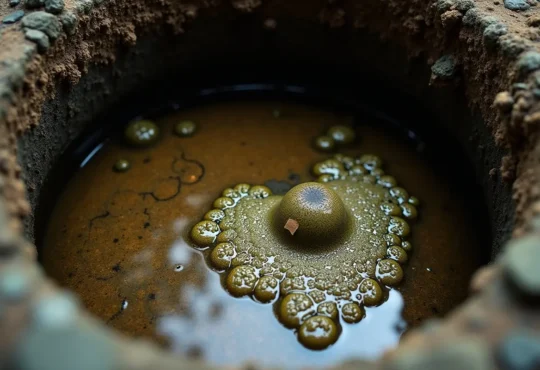
How to Unclog a Toilet Without a Plunger
When nature calls, a clogged toilet can be an unpleasant and frustrating predicament. While a plunger is the go-to tool for unclogging toilets, it’s not always readily available. Fear not, for there are numerous ingenious methods to clear the obstruction and restore the free flow of your toilet without relying on a plunger.
Contents
- 1 Preventing Overflow: The First Line of Defense
- 2 Unleashing the Power of Heat
- 3 Unleashing the Power of Chemical Reactions
- 4 DIY Drain Snake: A Hands-on Approach
- 5 Toilet Brush Plunging: A Resourceful Approach
- 6 Squirt Gun Pressure: A Quirky Yet Effective Solution
- 7 Removing Debris by Hand: A Last Resort
- 8 When to Call in Professional Help
- 9 Preventative Measures: Keeping Clogs at Bay
- 10 FAQ
Preventing Overflow: The First Line of Defense
Before attempting to unclog the toilet, it’s crucial to prevent an overflow, which can lead to a messy and unsanitary situation. Promptly take the following steps:
- Halt the Water Supply: Lift the tank lid and locate the flapper or rubber stopper. Gently press it down to block the water from entering the bowl. Alternatively, locate the water shut-off valve, typically situated behind the toilet near the base, and turn it clockwise to stop the water flow.
- Remove Excess Water: If the bowl is already filled to the brim, use a disposable container or a cup to scoop out the excess water carefully. This will create room for the unclogging process and prevent spillage.
Unleashing the Power of Heat
One of the most effective methods to dissolve stubborn clogs is to harness the power of heat. Here’s how you can employ this technique:
Boiling Water Blast
- Prepare the Water: Bring a pot or kettle of water to a rolling boil. Exercise caution when handling boiling water to avoid scalding.
- Pour with Precision: Slowly and carefully pour the boiling water directly into the toilet bowl. Aim for the center of the drain opening to maximize the impact on the clog.
- Allow Time to Work: Let the hot water sit for a few minutes, allowing it to break down and soften the clogged material.
- Flush and Repeat: Attempt to flush the toilet. If the clog persists, repeat the process with fresh boiling water until the obstruction is cleared.
Hot Water and Dish Soap Combination
- Gather Supplies: Collect a bucket or container, hot water (not boiling), and liquid dish soap.
- Mix the Solution: In the container, combine hot water and approximately half a cup of liquid dish soap. The soap acts as a lubricant and degreaser, aiding in the breakdown of the clog.
- Pour and Wait: Carefully pour the hot water and soap mixture into the toilet bowl, ensuring it reaches the drain opening.
- Let it Sit: Allow the solution to work its magic for 20-30 minutes, giving it time to penetrate and dissolve the clog.
- Flush and Repeat: Attempt to flush the toilet. If the clog persists, repeat the process with a fresh batch of the hot water and soap solution.
Unleashing the Power of Chemical Reactions
If heat alone doesn’t do the trick, you can harness the power of chemical reactions to break down stubborn clogs. Here are two effective methods to try:
Baking Soda and Vinegar Fizz
- Gather Supplies: Ensure you have baking soda and vinegar on hand.
- Pour Baking Soda: Start by pouring one cup of baking soda directly into the toilet bowl.
- Add Vinegar: Slowly pour two cups of vinegar into the bowl. The combination of baking soda and vinegar will create a fizzy reaction.
- Let it Fizz: Allow the fizzy mixture to work its magic for 30 minutes, giving it time to break down the clog.
- Flush and Repeat: Attempt to flush the toilet. If the clog persists, repeat the process with fresh baking soda and vinegar.
Epsom Salt Solution
- Gather Supplies: Procure Epsom salt and hot water.
- Pour Epsom Salt: Add one cup of Epsom salt directly into the toilet bowl.
- Add Hot Water: Slowly pour 1-2 liters of hot water into the bowl, allowing the Epsom salt to dissolve and create a chemical reaction.
- Wait and Watch: Let the solution sit for 15 minutes, during which time the magnesium and sulfate in the Epsom salt will work to break down the clog.
- Flush and Repeat: Attempt to flush the toilet. If the clog persists, repeat the process with fresh Epsom salt and hot water.
DIY Drain Snake: A Hands-on Approach
If the clog is particularly stubborn and refuses to budge with chemical or heat methods, you can create a makeshift drain snake to physically dislodge the obstruction. Here’s how:
- Gather Supplies: You’ll need a sturdy wire hanger, safety gloves, and protective eyewear.
- Straighten the Hanger: Carefully straighten the wire hanger, ensuring it forms a long, rigid rod.
- Protect Yourself: Put on your safety gloves and eyewear to avoid any potential splashes or injuries.
- Insert the Snake: Slowly and carefully insert the straightened wire hanger into the toilet drain opening.
- Maneuver and Twist: Use a gentle twisting and pushing motion to work the wire through the clog, dislodging any debris or obstructions.
- Flush and Repeat: Once you feel the clog has been loosened, attempt to flush the toilet. If necessary, repeat the process until the clog is completely cleared.
Toilet Brush Plunging: A Resourceful Approach
If you find yourself in a public restroom or a location without access to conventional unclogging tools, a toilet brush can serve as a makeshift plunger. Here’s how to utilize this resourceful approach:
- Locate the Brush: Locate a toilet brush, typically found mounted near the toilet.
- Position the Brush: Carefully insert the brush head into the toilet drain opening, angling it to create a seal.
- Plunge Away: Using the brush handle, apply downward pressure, mimicking the plunging motion of a traditional plunger.
- Repeat and Flush: Repeat the plunging motion several times, then attempt to flush the toilet. If the clog persists, continue the process until it’s cleared.
Squirt Gun Pressure: A Quirky Yet Effective Solution
In the absence of conventional tools, a squirt gun can surprisingly come to the rescue. This quirky yet effective method harnesses the power of water pressure to dislodge clogs. Here’s how to employ this technique:
- Gather Supplies: You’ll need a squirt gun or a plastic bottle with a nozzle, as well as warm water.
- Fill the Squirt Gun: Fill the squirt gun or bottle with warm water, ensuring it’s not too hot to avoid damaging the porcelain.
- Position and Aim: Carefully position the squirt gun or bottle nozzle inside the toilet bowl, aiming directly at the drain opening.
- Apply Pressure: Squeeze the trigger or bottle firmly, directing a powerful stream of water into the drain opening.
- Repeat and Flush: Repeat the process, alternating between squirting water and flushing the toilet, until the clog is cleared.
Removing Debris by Hand: A Last Resort
In some cases, the clog may be caused by a large, solid object that needs to be manually removed. While not the most pleasant task, it can be an effective last resort when other methods fail. Follow these steps:
- Protect Yourself: Put on a pair of sturdy, disposable gloves to protect your hands.
- Locate the Obstruction: Carefully inspect the toilet bowl and drain opening to identify any visible obstructions.
- Remove the Debris: Using your gloved hands, gently reach into the bowl and attempt to remove the obstructing item or debris.
- Dispose Properly: Once the obstruction is removed, dispose of it properly and thoroughly clean your hands.
- Flush and Repeat: Attempt to flush the toilet. If the clog persists, repeat the process or try one of the other methods mentioned in this guide.
When to Call in Professional Help
While the methods outlined in this guide can be effective in many cases, there may be instances where a clog proves too stubborn or deep-rooted for DIY solutions. In such situations, it’s advisable to seek the assistance of a professional plumber. Here are a few signs that indicate it’s time to call in the experts:
- Persistent Clogs: If you’ve tried multiple methods without success, and the clog remains firmly in place, it may be time to enlist professional help.
- Recurring Clogs: If you’re experiencing frequent clogs in the same toilet or multiple fixtures, it could be a sign of a more significant issue in your plumbing system, requiring expert assessment and repair.
- Water Backup: If you notice water backing up into other fixtures, such as sinks or tubs, when flushing the toilet, it’s a clear indication of a more severe blockage that requires professional attention.
- Structural Damage: If you suspect the clog is caused by a broken or damaged pipe, it’s best to leave the repair work to a licensed plumber to avoid further complications.
Professional plumbers have access to specialized tools and equipment, such as powerful drain augers and inspection cameras, which can effectively locate and clear even the most stubborn clogs. They also possess the expertise to diagnose and address any underlying issues that may be contributing to recurring clogs.
Preventative Measures: Keeping Clogs at Bay
While unclogging a toilet without a plunger is a valuable skill, preventing clogs from occurring in the first place is the ultimate goal. Here are some preventative measures you can take to minimize the likelihood of future clogs:
- Toilet Paper Usage: Be mindful of the amount of toilet paper you flush at once. Excessive amounts can contribute to clogs.
- Avoid Flushing Non-Biodegradable Items: Never flush items like feminine hygiene products, wipes, paper towels, or disposable diapers down the toilet, as they can easily cause blockages.
- Regular Maintenance: Perform regular maintenance on your toilet and plumbing system, such as using a toilet brush to scrub the bowl and drain opening, and occasionally flushing with a mixture of baking soda and vinegar to help break down any buildup.
- Septic Tank Maintenance: If your home is connected to a septic system, ensure regular pumping and maintenance to prevent clogs and backups.
- Inspect for Leaks: Regularly inspect your toilet for any signs of leaks or water seepage, as these can indicate underlying issues that may lead to clogs or other plumbing problems.
By following these preventative measures, you can significantly reduce the likelihood of encountering clogged toilets and the need for emergency unclogging techniques.
FAQ
How do you unblock a toilet without a plunger?
There are several effective methods to unclog a toilet without a plunger, including using boiling water, a combination of hot water and dish soap, baking soda and vinegar, Epsom salt, a DIY drain snake made from a wire hanger, a toilet brush for plunging, or a squirt gun to apply water pressure.
H3 How to quickly unclog a toilet?
For a quick unclogging solution, try pouring boiling water directly into the toilet bowl, allowing it to sit for a few minutes before flushing. Alternatively, create a fizzy reaction by combining baking soda and vinegar in the bowl, letting it work for 30 minutes before flushing.
Can a toilet unclog itself without a plunger?
In some cases, a toilet may unclog itself over time, especially if the clog is minor or caused by a small amount of debris. However, this process can be slow and unreliable. It’s generally more effective to take active measures to unclog the toilet using one of the methods outlined in this guide.
What can I use if I don’t have a plunger?
If you don’t have a plunger on hand, you can try using boiling water, a combination of hot water and dish soap, baking soda and vinegar, Epsom salt, a DIY drain snake made from a wire hanger, a toilet brush for plunging, or a squirt gun to apply water pressure.
How long will it take for a toilet to unclog itself?
A toilet’s self-unclogging time varies with clog severity and material. It might take hours or days. Proactive measures are more efficient and reliable.





 Hi I'm Joe.
Hi I'm Joe. 